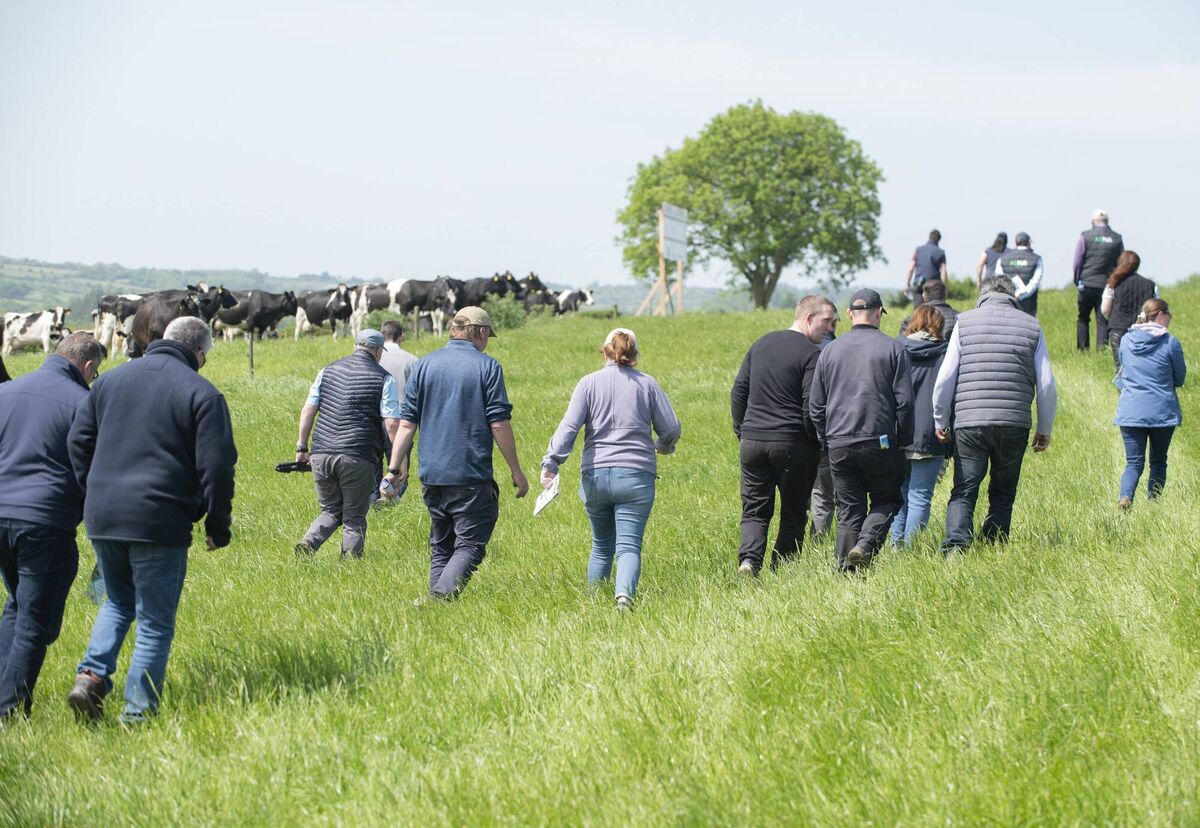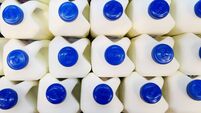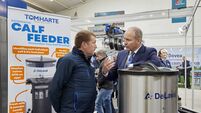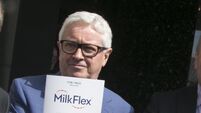A West Cork farmer risks a net profit drop of 45% if the nitrates derogation is to be lost post-2025.
The industry is continuing to fight for the retention of the nitrates derogation, which allows farmers to operate at a higher level of either 220kg or 250kg of organic nitrogen per hectare, depending on the area, compared to the 170kg level applicable for non-derogation countries.
Dairygold with Teagasc hosted a “farming for water: to protect our future” event recently on its supplier Raymond Goggin’s farm in Templemartin, Bandon, highlighting the work by farmers to protect and improve water quality.

Some 2,500 family farms supply milk to Dairygold, with 60% of these farms benefitting from the EU derogation.
Mr Goggin has a spring calving system, with a total of 60 hectares being farmed with milking platform making up 43 hectares.
His farm is located in a 250kg area.
He has good quality ground, with a lot of grass growing that he utilises, supported by his silage ground.
The whole farm stocking rate is 2.4 livestock units per hectare, and the milking platform stocking rate is 2.4.
At the moment, he has just over 120 cows.
His overall organic nitrogen per hectare rate last year was 220kg.
Last year he sold 497kg of milk solids per cow, with protein at 3.52%, which was back a bit on the previous year, and fat at 4.19%.
Calving interval for 2023 was 367 days, for 2024 that’s 366, and the six-week calving rate is gone up from 82% to 91% this year.
100% of the heifers calved between 22 to 26 months.
Mr Goggin is working hard to maximise nitrogen efficiency by having soil fertility correct on the farm.
100% of chemical nitrogen is spread as protected urea on the farm, and 100% of slurry is spread using low emissions spreading technology.
Clover incorporation is at 25% on the milking platform.
His nitrogen surplus in 2023 was 157kg per hectare, down 53kg per hectare in two years.
He is located near the Sall River, which has ‘good’ quality status.
Measures for water quality
Measures he has taken to protect water quality are having surplus slurry and soiled water storage capacity; new dungsted constructed; buffer planted to protect critical source area; cambered roadways and moved water troughs; 10m buffer strip for slurry applications; and clean water runoff from silage yard diverted.
Measures “nearly all cost something” Mr Goggin said, but “I think it’s important that we protect the environment; we need to hand it on to the next generation in as good a state as possible — we’re only guarding it for a while”.
He has described the knock-on effect “around the community” of losing the nitrates derogation altogether post-2025 as “huge”.
Reducing to a stocking rate of 170kg if the derogation was lost would have a significantly negative impact for his farm.
Teagasc has calculated that if this were to happen, he may have to cut cow numbers by around 25% - from 120 to 92.
Milk volume and solids would be down 23%, Teagasc said.
The cost of production would go up 13%, and he risks net profit dropping by 45%.
This is without mitigation steps, according to Teagasc.
The options available to him to maintain cow numbers include contract rearing of his young stock or leasing land, however these avenues would still lead to a significant drop in his net profit. Lowering crude protein is also recommended, which is an option he is already availing of.
Sustainable changes
From a report commissioned by Dairy Industry Ireland and conducted by EY, Dairygold’s dairy-related business activity contributes €3.3bn to the national economy and generates over 10,000 jobs through direct and indirect employment.
Dairygold said it is trying to support suppliers with their sustainability efforts, through the €10m Grassroots Milk Supplier Sustainability Bonus Programme for example.
The co-op has also put a dedicated water quality advisory team in place to advise farmers on measures to protect and improve water quality.
In 2023, Dairygold carried out more than 700 farm visits and worked with milk suppliers to develop dedicated water quality plans.
Dairygold chairman Seán O’Brien said that it is “essential that farmers are given the time and support to demonstrate that these initiatives are effective”.
“The removal of the nitrates derogation would have a profound negative impact on our farmers and the broader rural economy,” Mr O’Brien said.
“Farmers have worked hard to show they can make sustainable changes to their farm enterprises, and they now need to be given time for the results to speak for themselves.”
In free-draining areas and in much of the Dairygold region, the co-op said that the status of the estuarine and coastal waterbodies must be looked at “if we want to take a true measure of the effect our farming is having on water quality”.
EPA report
The Environmental Protection Agency’s water quality report published last year for 2022 states that one of the most significant stressors on water quality and ecosystem health is high nutrient levels, such as nitrogen and phosphorus.
The EPA’s assessment showed no significant improvement nationally in the biological quality of rivers and lakes in 2022, which is largely attributable to excess nitrogen and phosphorous.
Overall, nitrogen levels in rivers and groundwater increased between 2021 and 2022.
According to the EPA, nitrogen is too high in 40% of river sites and in 20% of estuarine and coastal water bodies.
In addition, phosphorus levels are too high in 28% of rivers and 36% of lakes.
The ecology of estuaries and coastal waters are particularly sensitive to nitrogen, with the worst impacted estuaries for nitrogen exceedances being Glashaboy Estuary (Cork), Wexford Harbour, Castletown Estuary (Louth), Upper Barrow Estuary (Kilkenny) and Corock Estuary (Wexford).












